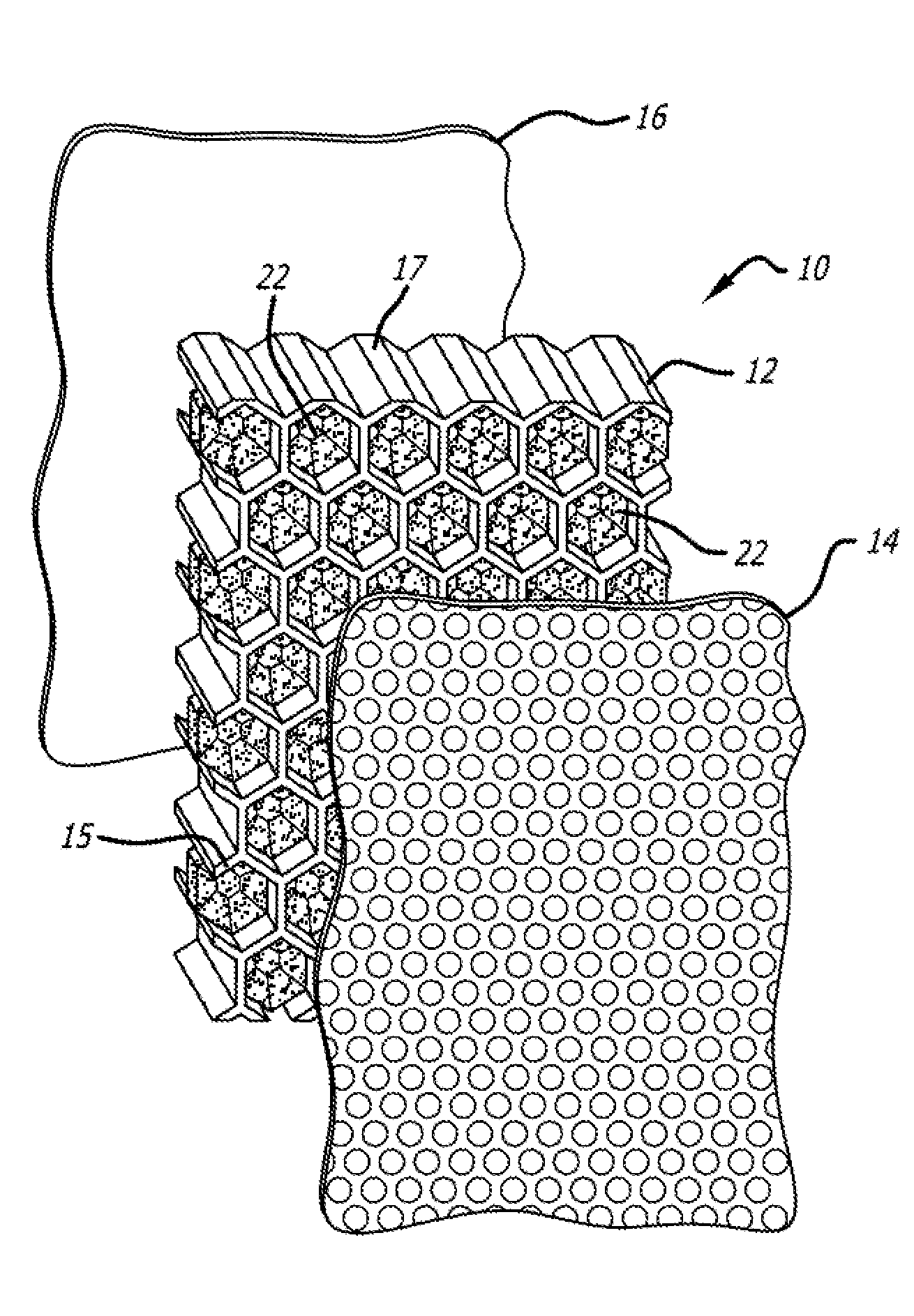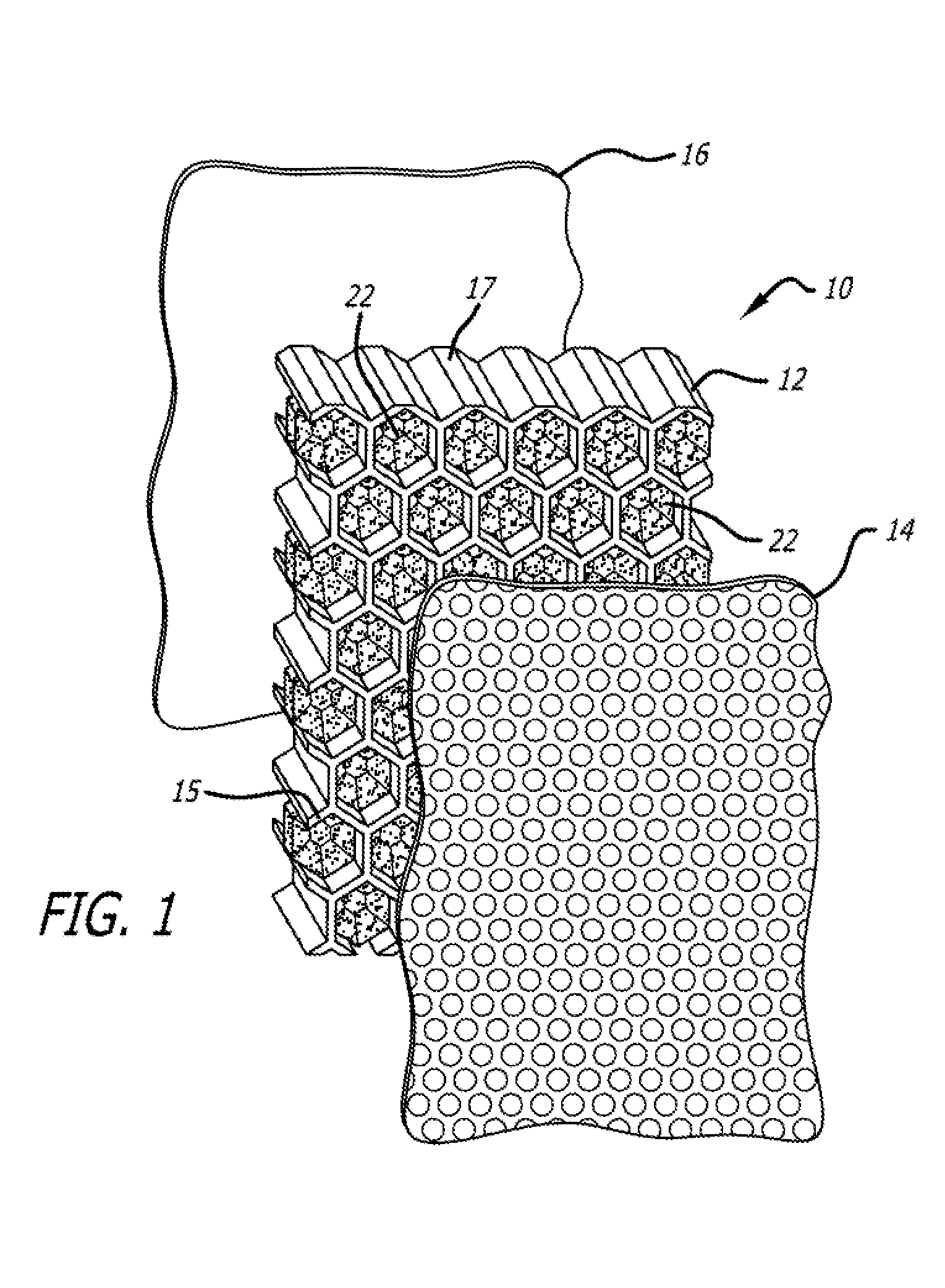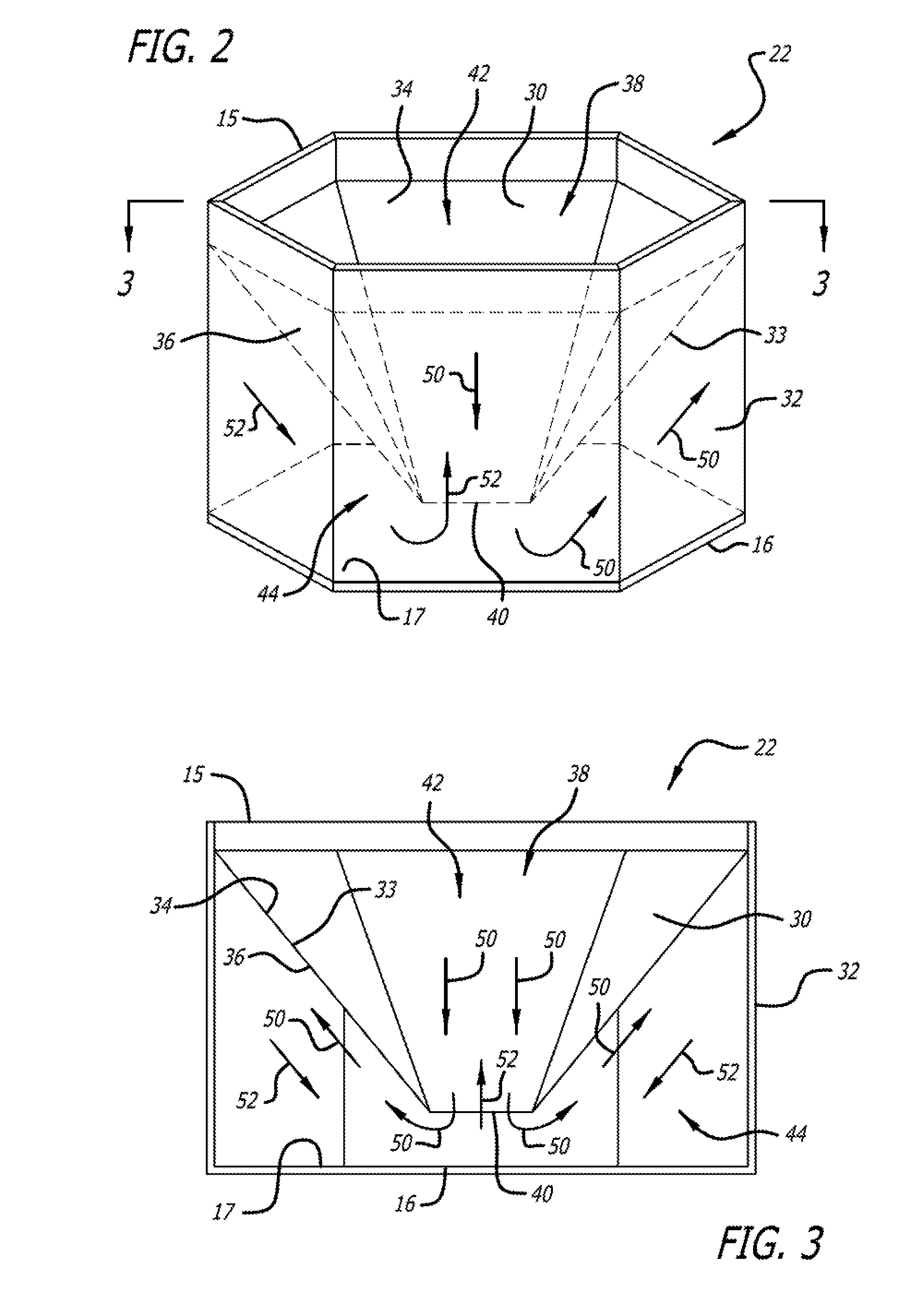Sound wave guide for use in acoustic structures
- Summary
- Abstract
- Description
- Claims
- Application Information
AI Technical Summary
Benefits of technology
Problems solved by technology
Method used
Image
Examples
Embodiment Construction
[0021]A partially exploded view of a portion of an exemplary acoustic structure in accordance with the present invention is shown at 10 in FIG. 1. The acoustic structure 10 includes an acoustic honeycomb 12 which is sandwiched between a porous face sheet 14 and a solid acoustic barrier face sheet 16. A portion of the assembled acoustic structure 10 is shown in FIG. 5 where it is located adjacent to a noise source 18 which is generating noise as represented by arrows20.
[0022]Although the acoustic structure of the present invention may be used for damping noise from a wide variety of noise sources, the acoustic structure is particularly well-suited for dampening noise generated by aircraft engines and particularly the large engines used for commercial aircraft. Accordingly, the acoustic structure shown at 10 in FIG. 5 is typically part of a nacelle which surrounds the central core of a turbofan jet engine 18.
[0023]The honeycomb 12 includes a first edge 15 that is located closest to th...
PUM
| Property | Measurement | Unit |
|---|---|---|
| Length | aaaaa | aaaaa |
| Structure | aaaaa | aaaaa |
| Size | aaaaa | aaaaa |
Abstract
Description
Claims
Application Information
 Login to View More
Login to View More - R&D
- Intellectual Property
- Life Sciences
- Materials
- Tech Scout
- Unparalleled Data Quality
- Higher Quality Content
- 60% Fewer Hallucinations
Browse by: Latest US Patents, China's latest patents, Technical Efficacy Thesaurus, Application Domain, Technology Topic, Popular Technical Reports.
© 2025 PatSnap. All rights reserved.Legal|Privacy policy|Modern Slavery Act Transparency Statement|Sitemap|About US| Contact US: help@patsnap.com



